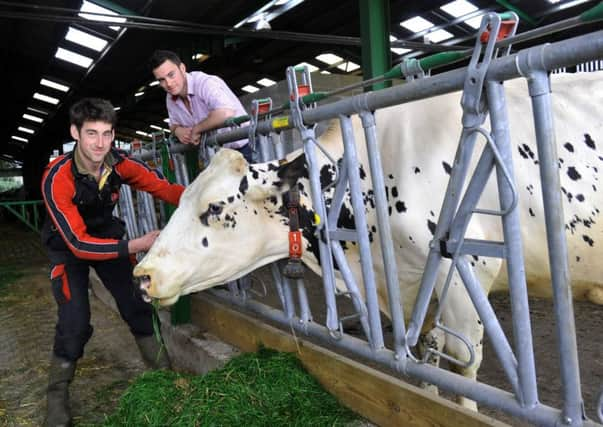Farm of the Week: How robots have changed milking at Mount Pleasant


Today the herd runs to 140 cows with 120 currently milking and 270-head overall. They have invested heavily in robotic milking, new cow buildings and equipment; have been able to take their first holiday in 30 years and their milk price has reached a level that is helping put the despair of the last two years of low prices behind them. Youngest son Mitch proved the impetus for making the move towards robots.
“If Mitch hadn’t been interested the robots would never have happened,” says Chris.
Advertisement
Hide AdAdvertisement
Hide Ad“We put two in on December 6 last year and we’re now expanding to make room for a third and to increase our herd number again. We need to get the infrastructure right for that with such as a new food store and silage clamp, but the days are gone when you can do a bit of everything on the farm and you need to be at the right scale too.
“We took the risk to reinvest when the milk price was at its lowest on the basis that if we could struggle through at that time then we would put ourselves in a position where we could recover well when the price went up. It says on the advertising for the robots we have taken on that the cows take to it well and I think they have adapted quicker than us.
“We had decided to go out of cows 12 years ago. I was worn out. We’d become very disillusioned. We were both working 100 hours a week and couldn’t see much daylight at the end of our tunnel. I’d added work with JCBs 22 years ago to provide further income and we had developed four holiday cottages. Our plan was to cash-in our milk quota, as many had done previously, but within six months of opening the cottages the price of milk quota crashed and we couldn’t afford to get out of dairying.”
Forced into a corner they fought their way out of a tight situation forsaking their original plan of sticking with the milk buyer they had supported since the demise of the Milk Marketing Board. Their move proved fortuitous in the light of what happened six years later.
Advertisement
Hide AdAdvertisement
Hide Ad“We’d stuck with Milk Marque that became Zenith and then latterly Dairy Farmers of Britain because we had felt it offered long-term security rather than short term gain, but eventually decided to go with Arla to get the extra that everyone else was getting. It was a good move because it meant we had our money that had been invested in Dairy Farmers of Britain out of there before they went bust.”
Mitch, 22, studied at Bishop Burton College and worked for an agricultural engineer before going home. He has a workshop on the farm, looks after the tractors and other farm machinery and runs the dairy farm with Christine, so that Chris can focus more on JCB work that includes a contract with the drainage board for 97,000 metres of flailing and weed cutting.
Chris still assists each morning, but Mitch is happy his parents can now breathe a little easier over the workload.
“I’ve seen what mum and dad have had to sacrifice over the years and it’s great that they have been able to get away recently. The robots mean that I don’t have to be in the same position where they had to be here 24/7. Everyone knows how dairying has been one of the most unsociable professions and that when you get invitations to parties, weddings or other functions it has sometimes been difficult to go because you’re tied to the farm.”
Advertisement
Hide AdAdvertisement
Hide AdThe robots have led to a rise in the herd’s average milk yield which has jumped from an average of 9,047 litres per cow per year to 9,497 litres.
“We haven’t consciously made an effort to produce more milk,” says Mitch. “It’s just occurred naturally. We’re still feeding them the same diet of silage, barley, little bits of protein and pelleted nuts.”
Tweaks are being made to the type of dairy cow that better suits robotic milking as well as efficiency.
“We are going for margin rather than purely yield and we’re now building the type of cow we need. We’re moving out of the cows with bigger bags as the robot arm struggles with those and we’re breeding slightly more replacements at present. We don’t want our Holstein Friesians quite as big as we have been getting to and we’ve served a few with Norwegian Red to get a bit more strength into them. Our cows generally last five or six lactations. Surplus young stock is traded when eight-weeks-old.”
Advertisement
Hide AdAdvertisement
Hide AdRenewable energy and environmental stewardship have been two other areas of concentration on the farm. Solar panels, ground source heat pumps and biomass boilers play their part and digging ponds and putting in a six-acre wood have brought recognition in the Tye Trophy awards for conservation.